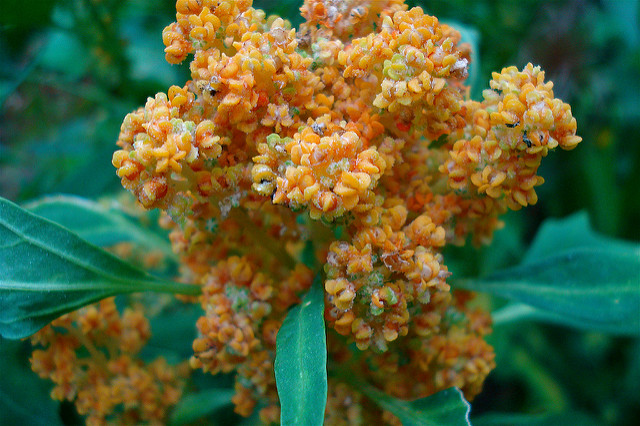Grow Quinoa in Your Garden
Due to its nutritious content, and good taste, quinoa has become a common household food in the United States. Learn how to grow your own quinoa and never purchase it again.
Quinoa seeds are very high in protein and have the ability to lower LDL cholesterol.This gluten free grain-like crop is great for heart health, digestion, and diabetes. Quinoa is generally undemanding and altitude-hardy.
Growing Guide
Quinoa grows best where maximum temperatures do not get higher than 90 F (32 C) and nighttime temperatures are cool.
For many areas in southern Canada and northern U.S., the optimal time for planting quinoa is are late April to late May. Seedlings will emerge within 3 to 4 days once soil temperatures are around 60 F (15 C). If quinoa is planted in soil that reaches higher temperatures during the night, it may not germinate. If you think you may live in an area where night temperatures are high, it is best to refrigerate seeds before planting.
Widget not in any sidebars
This tasty crop requires full sun. The seeds will germinate more easily in a finely prepare surface and adequate moisture. Sow seeds are 1/4 inch deep in rows 1 1/2 to 2 feet (45-60 cm) apart. Plants should be thinned 6 to 18 inches (15-45 cm) apart. You can use the thinnings in your salads.
1 gram of seed will sow 50 feet (15 m) of row. If you want to grow an acre of quinoa, you will need about 1 pound of seed. Seed life is about 2 years.
Quinoa is closely related to lamb’s-quarters, a common garden weed, so it is important to grow your crop in rows so that you will not have difficulty deciphering the weeds from the crop. At first, quinoa grows slowly, but once it reaches a foot, it will begin to grow much faster and should be relatively self-sufficient.
Secret blueprint for surviving the economic collapse (Ad)
You do not need to worry much about watering unless you live in an area that has longer dry spells. Quinoa is very adaptable to dry conditions and will do fine with minimal water.
Harvesting
Quinoa is ready to harvest when the leaves have fallen, leaving just the dried seedheads. Seeds can easily be stripped upwards off the stalk. As long as the maturing seeds are past the green stage, frost will cause little damage and harvesting can be done a day or two later. Extreme hot weather and warm nights can inhibit fruit set. Be sure to watch the weather when quinoa is ready to be harvested. The dry seeds can germinate if rained on, and if the heads are not completely dry, harvest them when you can barely indent the seeds with your thumbnail. Be sure to thoroughly dry the seeds before storage.
Ariana Marisol is a contributing staff writer for REALfarmacy.com. She is an avid nature enthusiast, gardener, photographer, writer, hiker, dreamer, and lover of all things sustainable, wild, and free. Ariana strives to bring people closer to their true source, Mother Nature. She is currently finishing her last year at The Evergreen State College getting her undergraduate degree in Sustainable Design and Environmental Science. Follow her adventures on Instagram.
Photo Credit:
allispossible.org.uk/flickr



